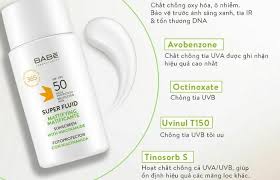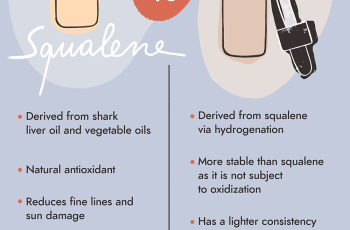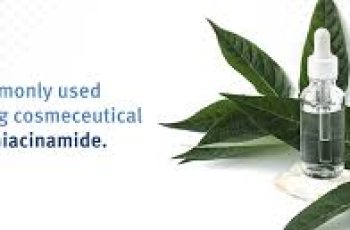
Tinosorb S Sunscreen
New Sunscreen Ingredient Tinsorb S
Living in sunny Miami, sunscreen isn’t just a seasonal accessory—it’s a daily necessity. As a dermatologist, I’ve seen firsthand how the relentless sun can affect skin health. That’s why the potential U.S. approval of Bemotrizinol (Tinosorb S), a new sunscreen ingredient long used in Europe, is exciting news for anyone seeking broad-spectrum UV protection.
What is Tinosorb S?
Tinosorb S, or Bis-Ethylhexyloxyphenol Methoxyphenyl Triazine, is a cutting-edge chemical sunscreen ingredient that may soon be found in sunscreens in the US. It’s not just any sunscreen; it’s a safe broad-spectrum SPF that efficiently absorbs both UVA and UVB rays, helping prevent sunburn and long-term skin damage. This new sunblock reflects some UV rays away from the skin while converting the rest into harmless heat.
Names for Tinosorb S
To find this new sunscreen Tinosorb S, look for the iNCI name is Bis-Ethylhexyloxyphenol Methoxyphenyl Triazine so you will see that name or Tinosorb S on the product label.
Other names for Tinosorb S are:
2,2′-[6-(4-Methoxyphenyl)-1,3,5-triazine-2,4-diyl]bis[5-[(2-ethylhexyl)oxy]-phenol]
Bemotrizinol
Bemotrizinoli
Bemt
Bis-ethylhexyloxyphenol Methoxyphenyl Triazine
Bis-octyloxyphenol Methoxyphenyl Triazine
Phenol, 2,2′-[6-(4-Methoxyphenyl)-1,3,5-triazine-2,4-diyl]bis[5-[(2-ethylhexyl)oxy]-
Tinosorb S
Trianilino-p-carboxyethylhexyl Triazine
Uvinul T 150
Safety
Bemotrizinol has been used since 2000 in Europe and is considered very safe. It is rated as a “1” by the EWG. In In 1999, SCCS confirmed that there was no evidence that this compound was toxic or very allergenic. (6)
Safety to Humans
There are no concerns about hormone disruption or skin irritation. In fact, studies show it causes less contact dermatitis compared to other similar ingredients.
Safety to Marine Life and Reefs
Besides being safe for human use, Tinosorb S is also environmentally friendly. It is considered reef-safe, which means it does not contribute to the degradation of coral reefs, a significant issue with some other chemical sunscreens.
Benefits
The reason there is so much excitement about the new sunscreen bemotrizinol is that it has many benefits and few downsides. The benefits are:
Broad spectrum
Photostable
Minimal system absorption
Minimal allergy risk
Tinosorb S provides broad-spectrum protection, covering both UVA and UVB rays effectively. Its photostability ensures that it doesn’t break down in the sun, providing reliable protection throughout the day. Moreover, it does not penetrate the bloodstream, adding an extra layer of safety. It is one of the most popular sunblocks used for children in Poland.
Characteristics
This section addresses the concerns and downsides to many sunscreens. Tinosorb S has these characteristics:
Opacity : Tinosorb S is not inherently opaque on the skin. It is sheer and blends well into sunscreen formulations without leaving the white cast typically associated with physical sunscreens like zinc oxide or titanium dioxide.
Formulation Challenges : Tinosorb S is considered relatively easy to formulate compared to some other UV filters. Its solubility and compatibility with other sunscreen agents allow it to be incorporated into a wide range of sunscreen products, including lotions, creams, and sprays. It is also used to stabilize other sensitive ingredients, enhancing the overall formulation.
Comedogenicity : This new sunscreen ingredient does not typically clog pores, making it suitable for use in sunscreens designed for all skin types, including those prone to acne. It is considered a noncomedogenic sunscreen.
Stinging and Irritation : Tinosorb S does not commonly cause stinging or burning sensations when applied to the skin. Unlike some chemical sunscreens, it does not bind to TRP (transient receptor potential) receptors, which are responsible for mediating sensations such as pain, warmth, or itch. This lack of interaction reduces the risk of sensory irritation that can occur with other sunscreens.
Downsides and Side Effects
Tinosorb S has a few side effects:
Eye irritation: Many sunscreens can cause eye irritation and this has been reported with Tinosorb S so do not use a spray near your face. Instead, choose creams, lotions and sticks for your face.
Allergic reactions are not common but have been reported.
How it Works
Tinosorb S has a dual-action mechanism, distinguishing it from traditional organic sunscreens. Its molecular structure enables it to function both as a UV absorber and a UV reflector, thus providing comprehensive protection against the spectrum of ultraviolet radiation. As a UV absorber, Tinosorb S efficiently converts UV radiation into harmless heat through a process of photo-induced electron release and re-capture, which prevents the radiation from penetrating deeper skin layers and initiating cellular damage. Concurrently, its molecular configuration allows it to scatter and reflect UV rays, a characteristic more commonly associated with physical sunblocking agents like zinc oxide or titanium dioxide. This hybrid functionality not only enhances the broad-spectrum protection against both UVA and UVB rays but also contributes to the photostability of the compound, ensuring that it maintains its protective capabilities even after prolonged exposure to solar radiation. Moreover, Tinosorb S exhibits a high degree of photostability, resisting degradation and thereby maintaining its efficacy over time. This stability is particularly significant as it allows Tinosorb S to protect against photoaging and photocarcinogenesis, which are long-term risks of UV exposure. Additionally, its capability to stabilize other sunscreen ingredients enhances the overall formulation effectiveness, making Tinosorb S a valuable component in broad-spectrum sunscreen products.
Which Wavelengths Does it Block?
Tinosorb S effectively blocks a wide range of ultraviolet light wavelengths, offering broad-spectrum protection. Here are the specifics in bullet points:
UVA Protection:
Tinosorb S covers the entire UVA range from 320 nm to 400 nm.
It has peak absorption at around 340 nm, providing robust protection against deep-penetrating UVA rays that contribute to skin aging and long-term damage.
UVB Protection:
Tinosorb S also offers comprehensive coverage in the UVB range from 280 nm to 320 nm.
It features a significant absorption peak at 310 nm, which is crucial for protecting against UVB rays that cause sunburn and direct DNA damage.
This broad-spectrum coverage is beneficial for preventing both immediate effects, like sunburn, and long-term issues such as photoaging and skin cancer.
Is Tinosorb S Good for Your Skin Type?
Understanding your specific skin type is crucial for selecting the right sunscreen. I encourage you to take the Baumann Skin Type Quiz to determine the best skincare products for your unique profile. This will ensure that you use a sunscreen that complements your skin’s needs while offering optimal protection against the sun’s harmful rays.
Tinsorb Sunscreen Comparison
Both Tinosorb M and Tinosorb A2B represent advancements in sunscreen technology, offering strong, broad-spectrum protection with safety profiles suitable for sensitive skin and during pregnancy. They differ slightly in their specific UV range focus and formulation characteristics but share common benefits in photostability, hypoallergenic properties, and environmental safety.
Tinsorb M
Tinosorb M, scientifically known as Methylene Bis-Benzotriazolyl Tetramethylbutylphenol (MBBT), is a sophisticated UV filter notable for its dual-action protection, combining organic and inorganic properties. It functions both by absorbing and reflecting UV radiation, offering broad-spectrum coverage against both UVA and UVB rays. Its unique attribute is its microfine structure, which allows it to remain on the skin’s surface, enhancing its photostability and efficacy. Tinosorb M is recognized for its minimal skin penetration, reducing concerns about systemic exposure and making it safe for use during pregnancy. It does not exhibit endocrine-disrupting effects, further affirming its safety profile. In sunscreen formulations, it is often paired with Avobenzone to stabilize the latter, thereby preventing Avobenzone’s rapid degradation in sunlight. This synergistic combination results in enhanced photostability. Despite being hypoallergenic and suitable for sensitive skin, Tinosorb M is not inherently waterproof and may require specific formulation adjustments, such as the addition of film-forming agents, to improve its water resistance. Regarding environmental impact, Tinosorb M is considered to be marine and reef safe, aligning with increasing regulatory and consumer demand for environmentally friendly sunscreen ingredients.
It is approved in Europe but as of May 2024, was not yet approved in the USA.
Tinsorb A2B
Tinosorb A2B, another advanced sunscreen ingredient, further expands the range of UV protection by specifically addressing the UVB and short UVA range. Like Tinosorb M, Tinosorb A2B is also photostable and designed to be safe for sensitive skin, including during pregnancy. It does not absorb into the skin, minimizing systemic exposure and associated risks. Additionally, Tinosorb A2B does not show any evidence of endocrine disruption. Its formulation is designed to complement other UV filters, enhancing the overall stability and effectiveness of sunscreens. Tinosorb A2B’s inclusion in sunscreens helps achieve comprehensive protection across a broader spectrum of UV light, making it a valuable component in full-spectrum sunscreens. Its efficacy and safety profile also make it a preferred choice for formulations aimed at protecting sensitive and vulnerable populations. Similar to Tinosorb M, it is considered marine and reef safe, adhering to environmental guidelines and consumer preferences for sunscreens that do not harm aquatic ecosystems.
Comparison Summary of Tinsorb Types
When comparing the different types of Tinsorb, these are the differences inthe available forms:
UV Protection Range : Tinosorb A2B offers the broadest coverage, targeting both UVB and short UVA rays effectively.
Formulation Characteristics : Tinosorb M can be formulated to improve water resistance, though it is not inherently the most water-resistant. It forms a microfine layer that helps it remain on the skin surface, but due to its larger particle size, it tends to be more opaque compared to the others.
Cosmetic Elegance : Tinosorb S is known for its excellent cosmetic elegance, being the sheerest of the three. This makes it preferred in formulations seeking minimal visibility on the skin.
Hypoallergenic Properties : All Tinosorbs are generally hypoallergenic, but Tinosorb M, staying mostly on the skin’s surface, might be considered the least likely to cause allergic reactions due to minimal skin penetration.
I hope you enjoyed this blog. Feel free to ask our Skincare concierge AI bot any questions you have on this article. It can also help you shop for Tinsorb sunscreens once Tinsorb is approved for use in the United States- which we all hope will happen soon.


